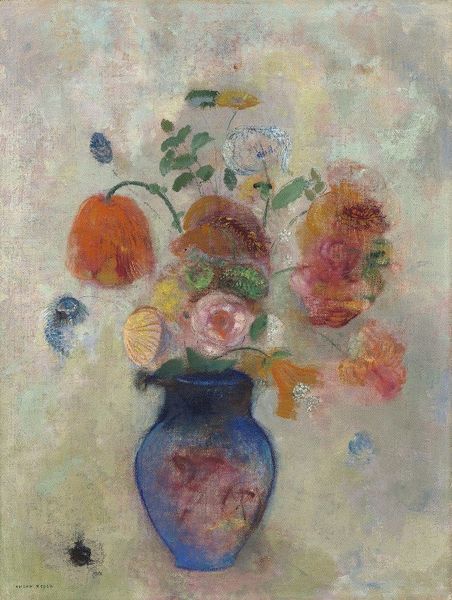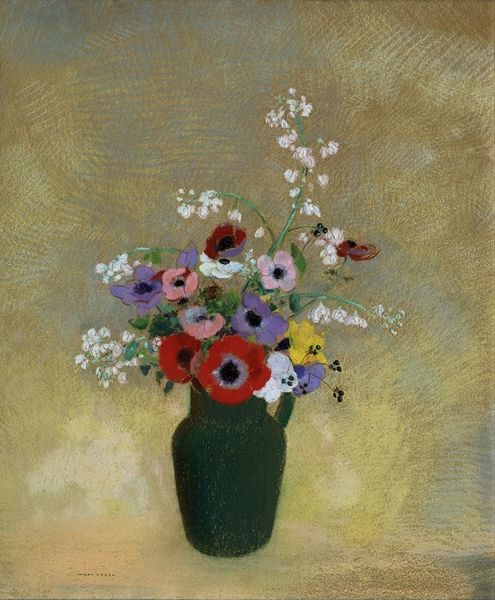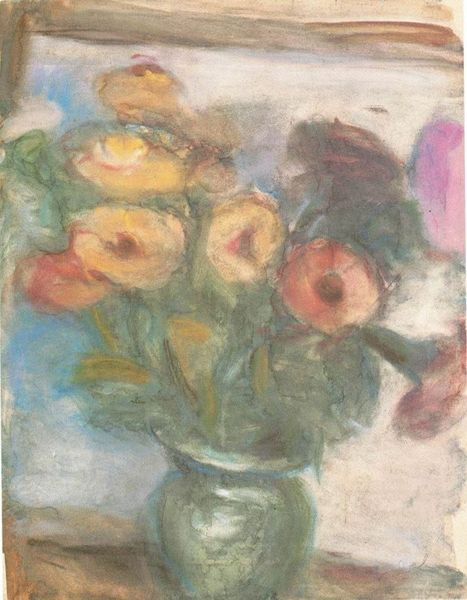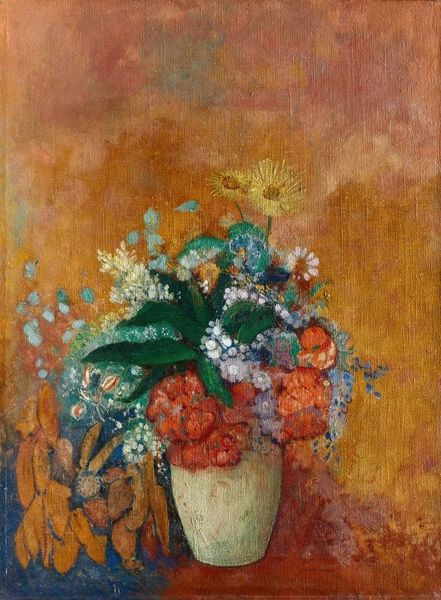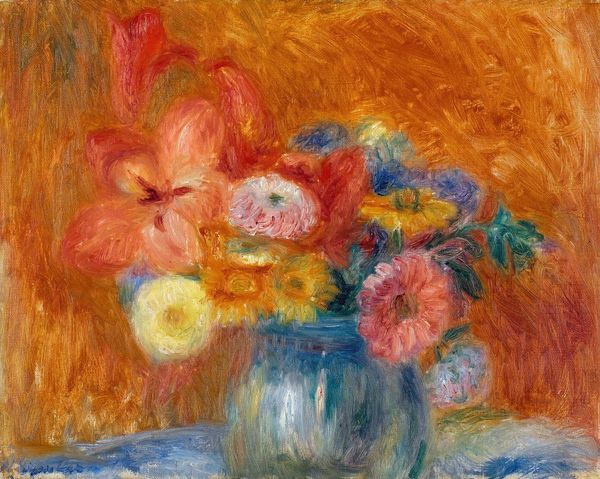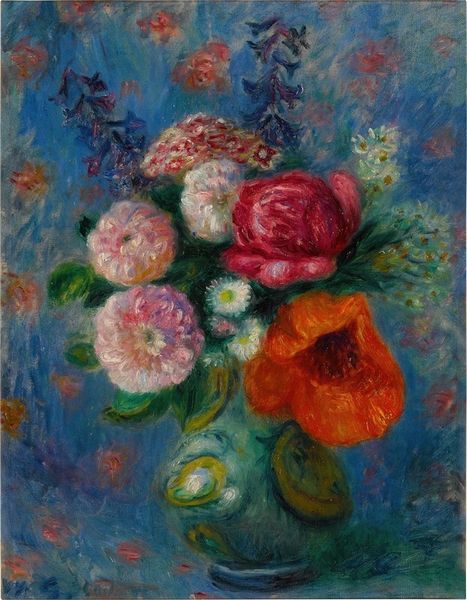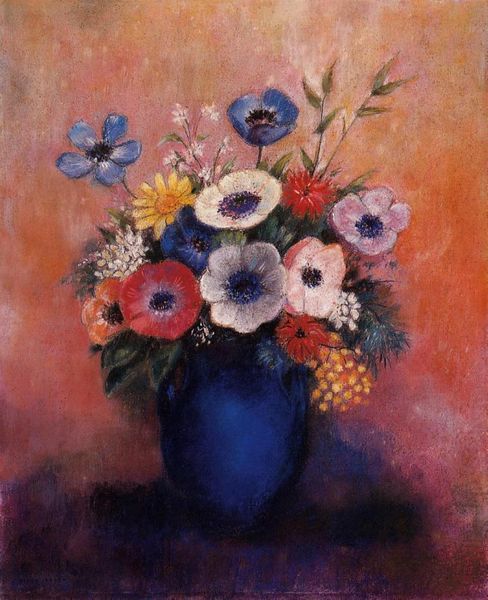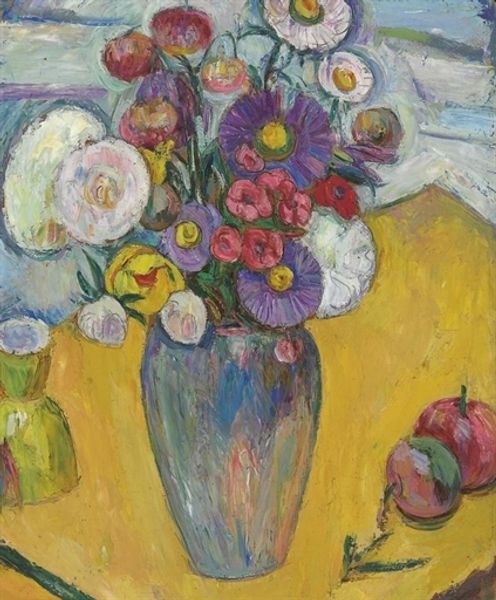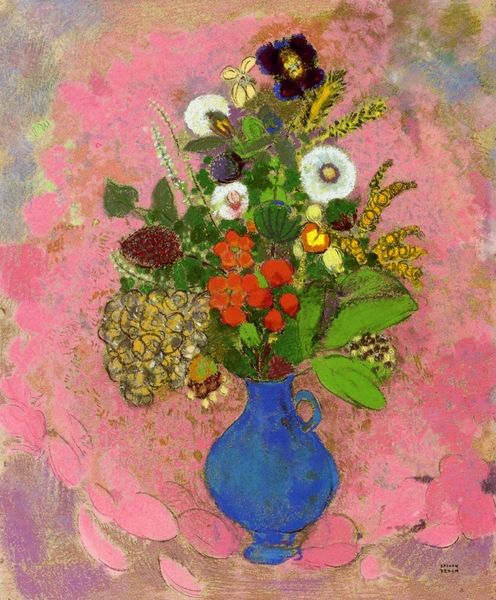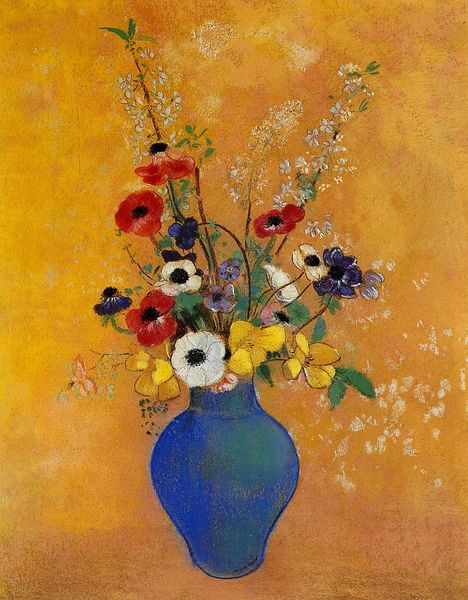
pastel
#
water colours
#
impressionism
#
landscape
#
folk-art
#
pastel
Copyright: Public Domain: Artvee
Editor: This is a beautiful pastel drawing of a “Floral Still Life,” by Frederick Carl Frieseke. Its overall gentle and light textures feel romantic and charming. What stands out to you in this work? Curator: What strikes me immediately is how this piece reflects the democratization of art at the turn of the 20th century. With impressionism came a focus on domestic life and leisure. Does this still life seem staged, or does it have more informal tone? Editor: It does feel more informal. Less about aristocratic wealth and more about a quiet, everyday beauty. Curator: Exactly. These floral paintings catered to a growing middle class with more disposable income and access to art through burgeoning galleries and museums. These institutions really helped shape public taste. Now, what about the pastel medium itself? Editor: Well, pastels are often associated with lightness and spontaneity, perfect for capturing the fleeting effects of light in an Impressionistic style. Curator: Precisely. The choice of pastel and the Impressionist style themselves reinforced a rejection of academic art traditions, signifying broader cultural shifts. Artists could now directly engage a wider public. The rise of landscape and still life shows also contributed significantly. Does this image now seem more closely aligned to social changes? Editor: It’s fascinating to think about how even a seemingly simple still life is intertwined with social history and the changing art world! Seeing it in that light enriches my appreciation. Curator: Indeed. This work encapsulates not just aesthetic pleasure but a whole set of societal transformations, accessible to those newly engaged art patrons of the day. Editor: I'll certainly be thinking more about that wider social context from now on when viewing works in museums.
Comments
No comments
Be the first to comment and join the conversation on the ultimate creative platform.
